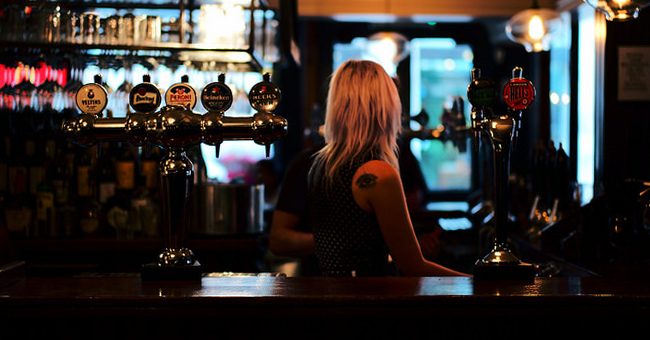Earlier this week, we released our first research paper investigating the systemic barriers and biases within the hospitality industry affecting women and members of minority groups. The final product is the result of months of research, number-crunching, surveys, and interviews with industry leaders. As a community — and as a society — we still have a long ways to go before these barriers are erased and members of our industry can build their careers with equal access to resources and mobility. But right now, facilitating an honest, open and informed conversation seems like a good starting point.
As for managers, owners, and other industry leaders in decision-making positions, there are a few simple and effective shifts you can implement in your everyday practices to help level the playing field, from being proactive about inclusive hiring to establishing a zero-tolerance policy toward sexual harassment of bartenders by customers. Read more about the steps you can take in this Huffington Post op-ed, written by our founder, Ann Tuennerman.
And, if you plan to join us at Tales in July, don’t miss our Gender Intelligence session on Tuesday, July 19, where we’ll be discussing how gender differences can translate in the workplace and how to integrate this knowledge into your workplace practices on an everyday basis.
Finally, we hope you’ll join us on Wednesday, July 6, 2016 for our next livestreamed Shake-Up. We’ve invited two leaders from the Gender Intelligence group to chat with us about creating a more inclusive workplace by better understanding how men and women communicate and engage with one another.
Below, we’ve compiled a few of the most interesting facts and learnings that speak to the state of equality in our industry.
1. The wage gap exists in the bartending world. According to a 2014 study by the Economic Policy Institute (EPI) using microdata from 2011-2014, the median real hourly wage for female bartenders is $12.17 compared to $13.88 for their male counterparts.
2. Women are underrepresented in higher-paying, higher-profile bartending positions. A survey of fine dining bartenders in New York by Restaurant Opportunity Centers (ROC) United found that 59% were male. Comparatively, only 45% of bartenders in family style restaurants (a position with much lower earnings) were male.
3. Fewer women are represented in competition circuits. A study conducted by Girls with Bols found than a quarter of those competing in international bartending competitions were female, and in 2014, only 3% of Canadian applicants to Dieageo World Class were female. “Competitions are an area where the gender divide is clearly exemplified,” says Ivy Mix, the award-winning bartender who co-founded all-women bartending competition Speed Rack with Lynnette Marrero.
4. But, that may be changing. In this year’s Spirited Awards nomination process, women and men nominated themselves for individual awards at almost identical rates (~17%). This could suggest a change in prevailing attitudes and a growing confidence among women in the craft cocktail industry. It may also be influenced by the anonymous nature of the nominations, versus the public spectacle of competitions.
5. The racial wage gap is less pronounced among bartenders than in the working population as a whole — but Hispanic and African-American populations are still frequently pushed to lower-paying, less visible back-of-house positions.
6. The most commonly encountered barriers often spring from employers themselves. Survey responses indicate that the most significant barrier for women establishing a career in bartending is employer bias (30%), followed by customer bias/expectations (24%) and expectations around families (19%). Employer bias can manifest in biased hiring practices and discrepancies in training, promotions and mobility.
7. Sexual harassment is a huge problem, and its roots run deep. As we’ve written before, inappropriate behavior from customers isn’t uncommon — and in the hospitality industry, it’s downright rampant. According to another report from ROC, nearly 37 percent of all sexual harassment charges filed by women with the Equal Employment Opportunity Commission (EEOC) come from the [hospitality] industry – “at more than 5 times the rate for the general female workforce.”





